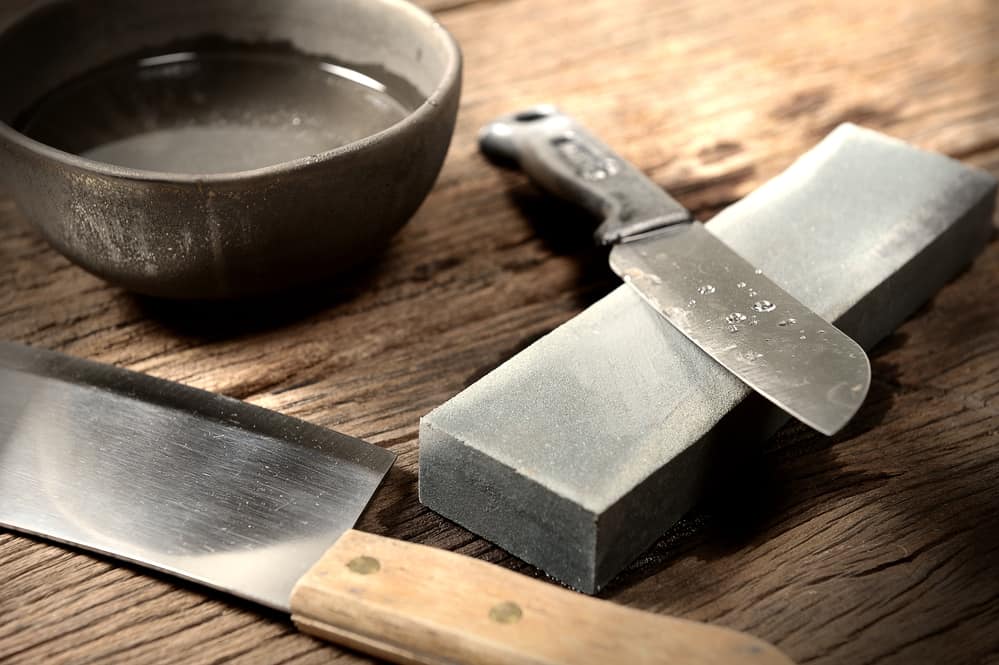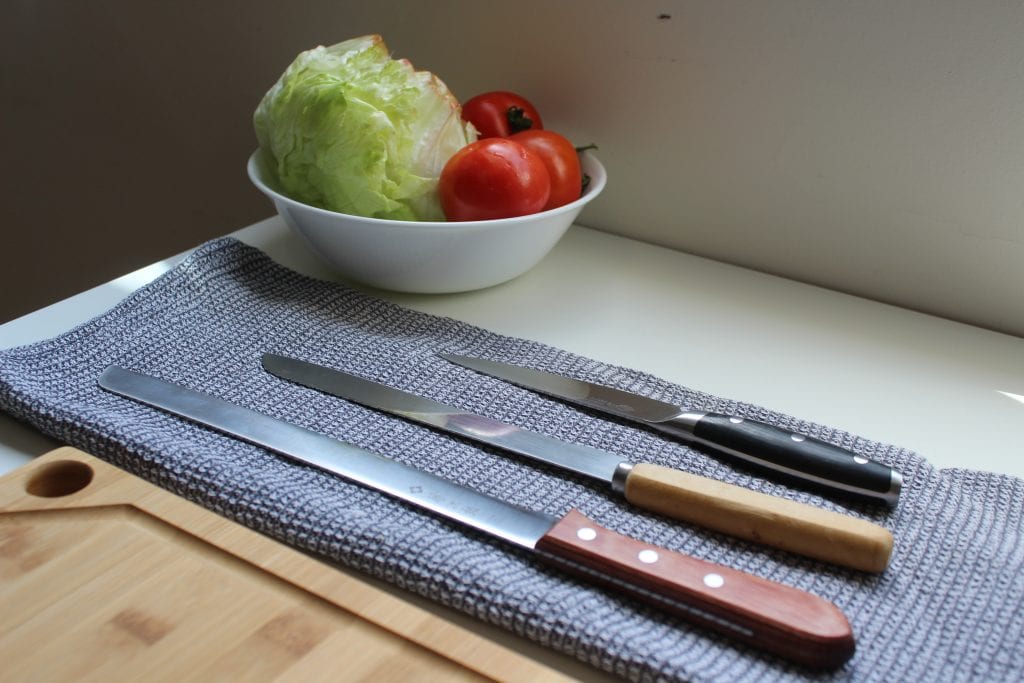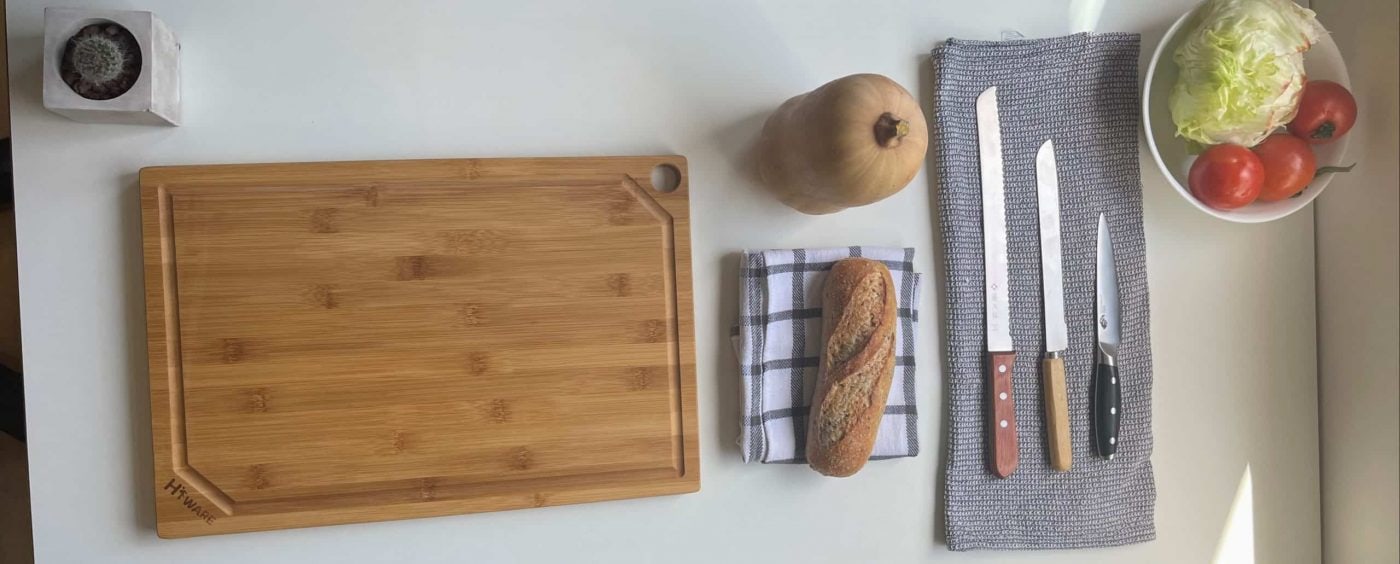You may be surprised that kitchen knives have not always been around. Before the invention of kitchen knives, people used the same knives in their hunting repertoire invented in the bronze age. This old version of a kitchen knife was usually a sword of some kind that was challenging to use for chopping and slicing.
It’s essential to understand the question “when was the kitchen knife invented” to more fully appreciate kitchen knives. Then, we can understand their use and importance in the kitchen.

When Exactly Was the Kitchen Knife Invented?
There is no exact time when the kitchen knife was invented. After the cutting-edge invention of steel in the Iron Age, swords and knives greatly improved in quality. This material was stronger and more durable than bronze. It also could be sharpened more easily.
A few places began developing kitchen knives first – Solingen, Germany, and Seki, Japan. These locations both had mineral-rich soil and rivers to aid in knife-making.
Japan and Germany had their version of knives. Each Japanese knife was highly decorated and light in weight. German knives were much heavier, thicker, and bigger. The exact timeline of kitchen knives is a bit unclear, but it is noted that 1731 is when the kitchen empire began. 1731 is the year when Peter Henkel began crafting kitchen knives.
Why Was the Kitchen Knife Invented?
It is thought that kitchen knives were the initial piece of cutlery invented. Initially, smaller knives were used in the kitchen in various societies like Scotland (called a “dirk”) or Japan (“kozuka”). These first knives were a precursor to kitchen knives and were carried around strictly for kitchen use.
Using swords and war knives to slice meat was not ideal as it prevented warriors from being able to cut more precisely. Hence why, warriors began carrying smaller knives around for carving. Thus, it was necessary to keep evolving kitchen knives until they were suitable for use inside (and by those who were not warriors).

What Is a Kitchen Knife Called?
Kitchen knife may seem like a confusing term as it’s pretty general. Sharp kitchen knives (not butter knives) are divided into two categories – multi-purpose like chef’s knives or single purpose. When using a multi-purpose knife like a chef knife, you’ll find they are distinguishable by their 8″-10” length of knife blades.
Single-use kitchen knives include options like a bread knife, carving knife, and boning knife; the list continues. Everything from a paring knife to a cleaver falls under this category. When referring to a kitchen knife, know that you’re describing any knife you use in the kitchen.
What Makes the Best Kitchen Knife?
At the beginning of knife making, the only purpose was to create cutting tools that were easier to carry around and use in the kitchen. As knowledge about kitchen knives has evolved, the criteria for what makes the best kitchen knife has changed.
Searching for kitchen knives differs depending on home cooks’ and chefs’ preferences. It’s important to consider what use you’re trying to fill before finding the best kitchen knife for you.
When finding a kitchen knife, some of the main criteria are – use, balance, material, and size. Choosing a knife based on the intended use is essential to selecting the correct kitchen knife. A well-balanced knife allows you to chop without discomfort to your wrist or hand.
The material should be durable and easy to sharpen. As for the size, it needs to be not too heavy for you. Otherwise, it will be challenging to use. Of course, it’s also important to choose kitchen knives that fall within your budget, like the Henckels Statement Kitchen Knife Set with Block.
Being mindful of the origin of kitchen knives allows you to see the importance of these knives and how they’ve evolved through the years. These knives have come a long way, from heavy forged knives made from bronze to kitchen knives like steak knives, table knives, carving knife options, and a chef’s knife. These modern, sharp knives are perfectly created to work swiftly and safely in the kitchen.




Post Your Thoughts